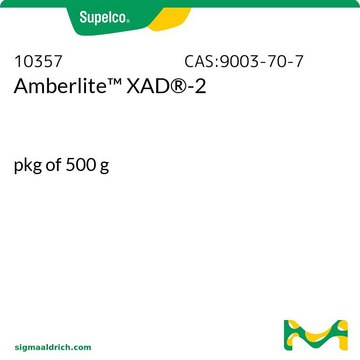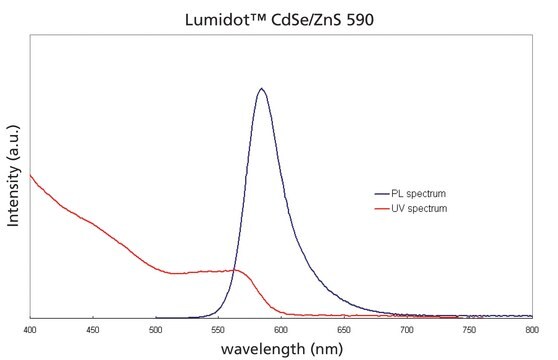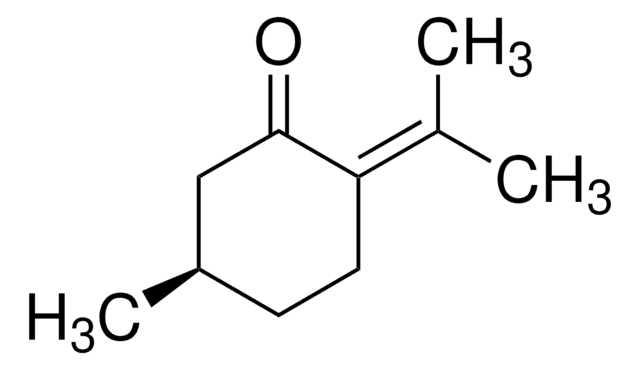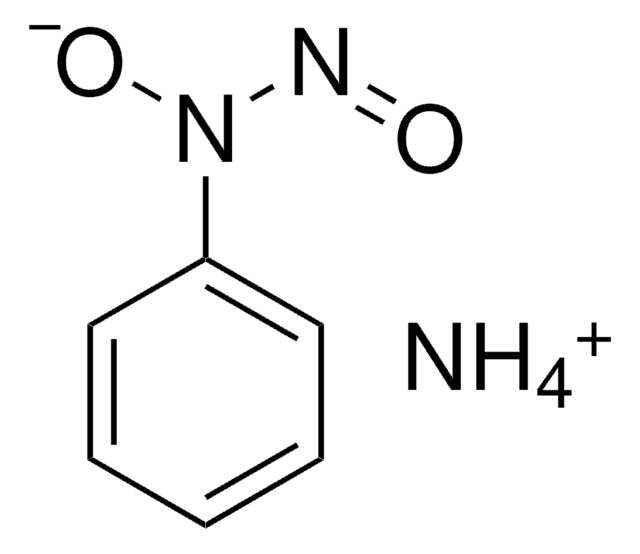662461
Lumidot™ CdSe
640, core-type quantum dots, 5 mg/mL in toluene
Synonym(s):
Cadmium monoselenide, Cadmium selenide
Sign Into View Organizational & Contract Pricing
All Photos(1)
About This Item
Empirical Formula (Hill Notation):
CdSe
CAS Number:
Molecular Weight:
191.37
MDL number:
UNSPSC Code:
26111700
PubChem Substance ID:
Recommended Products
form
dispersion
concentration
5 mg/mL in toluene
particle size
6.2-7.7 nm
λmax
615-625 nm
fluorescence
λem 635-645 nm
storage temp.
2-8°C
InChI
1S/Cd.Se
InChI key
AQCDIIAORKRFCD-UHFFFAOYSA-N
Looking for similar products? Visit Product Comparison Guide
General description
Organically stabilized cadmium selenide quantum dots in toluene
Application
Analysis Note
Particle size was determined by TEM according to the procedure of Yu, W. W., et al., Chem. Mater., 2003, 15, 2854.
Quantum yield was measured following the procedure of Qu, L., Peng, X., J. Am. Chem. Soc., 2002, 124-2049.
Other Notes
Lifetime one year if stored properly
Legal Information
Product of Nanoco Technologies sold under US and worldwide patents and patents pending.
Lumidot is a trademark of Sigma-Aldrich Co. LLC
Signal Word
Danger
Hazard Statements
Precautionary Statements
Hazard Classifications
Aquatic Chronic 2 - Asp. Tox. 1 - Flam. Liq. 2 - Repr. 2 - Skin Irrit. 2 - STOT RE 2 - STOT SE 3
Target Organs
Central nervous system, Respiratory system
Storage Class Code
3 - Flammable liquids
WGK
WGK 3
Flash Point(F)
39.2 °F
Flash Point(C)
4 °C
Personal Protective Equipment
dust mask type N95 (US), Eyeshields, Gloves
Choose from one of the most recent versions:
Already Own This Product?
Find documentation for the products that you have recently purchased in the Document Library.
David T R Stewart et al.
Environmental toxicology and chemistry, 32(6), 1288-1294 (2013-02-19)
The present study addresses the bioaccumulation behavior of cadmium selenide quantum dots by Eisenia andrei earthworms in a terrestrial environment. Earthworms were exposed to quantum dot-treated soil for up to 4 wk and analyzed for cadmium and selenium concentration using
Haritz Etxeberria et al.
Journal of nanoscience and nanotechnology, 13(1), 643-648 (2013-05-08)
CdSe nanoparticles with polystyrene (PS) brushes are obtained by "grafting through" technique starting from solely aqueously synthesized nanoparticles. Mercaptoethanol (ME) capped nanoparticles are used to achieve double bond functional groups on the surface by condensation reaction with methacryloxypropyltrimethoxysilane (MPS). PS
Yuanyuan Wang et al.
Inorganic chemistry, 52(6), 2933-2938 (2013-03-06)
Four [(CdSe)13(RNH2)13] derivatives (R = n-propyl, n-pentyl, n-octyl, and oleyl) are prepared by reaction of Cd(OAc)2·2H2O and selenourea in the corresponding primary-amine solvent. Nanoclusters grow in spontaneously formed amine-bilayer templates and are characterized by elemental analysis, IR spectroscopy, UV-vis spectroscopy
Shancheng Yan et al.
Journal of nanoscience and nanotechnology, 13(1), 23-32 (2013-05-08)
Semiconducting nanowire heterostructures are of particular interest because of their fascinating properties and potential applications in the field of nanoscale science. CdS, with a direct bandgap of 2.42 eV, is considered to be an excellent material for various optoelectronic applications
Yong Li et al.
ACS nano, 7(3), 2240-2248 (2013-02-13)
Microbial cells have shown a great potential to biosynthesize inorganic nanoparticles within their orderly regulated intracellular environment. However, very little is known about the mechanism of nanoparticle biosynthesis. Therefore, it is difficult to control intracellular synthesis through the manipulation of
Our team of scientists has experience in all areas of research including Life Science, Material Science, Chemical Synthesis, Chromatography, Analytical and many others.
Contact Technical Service











